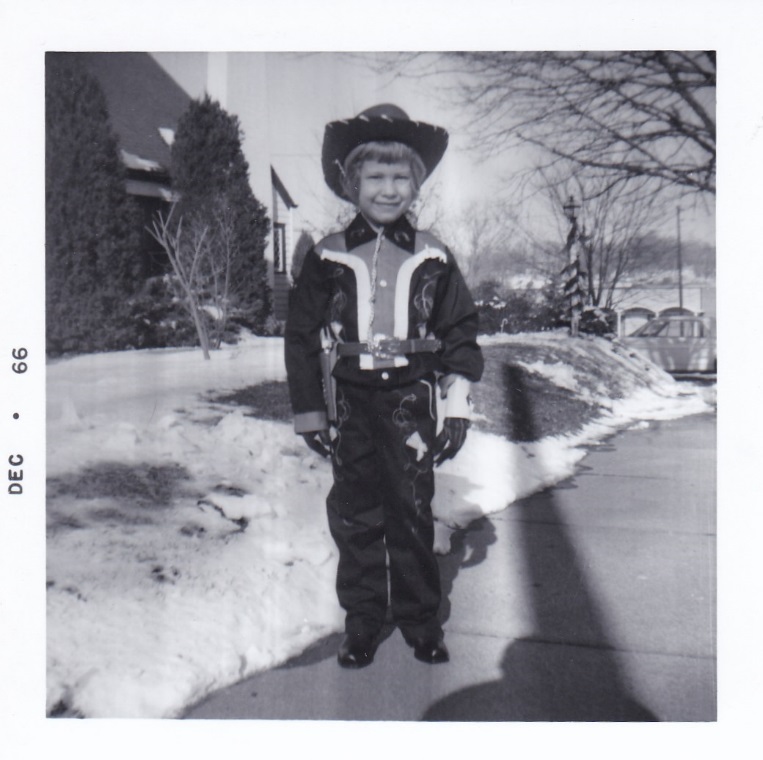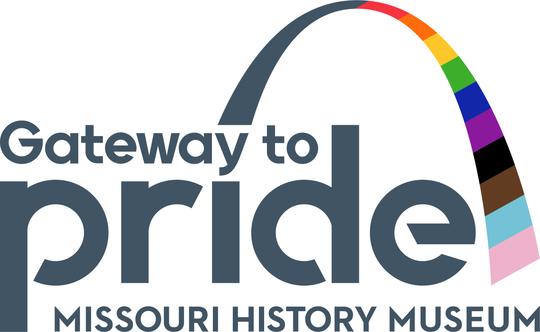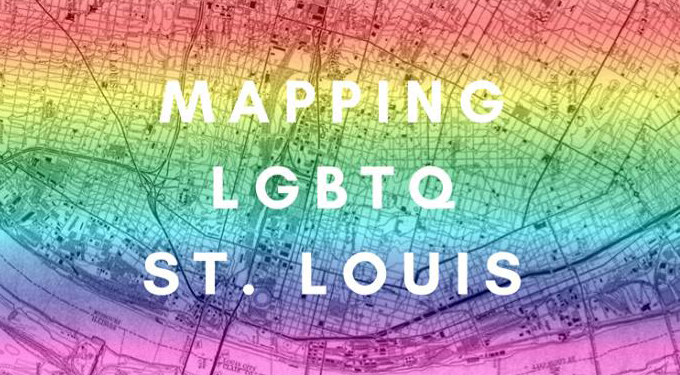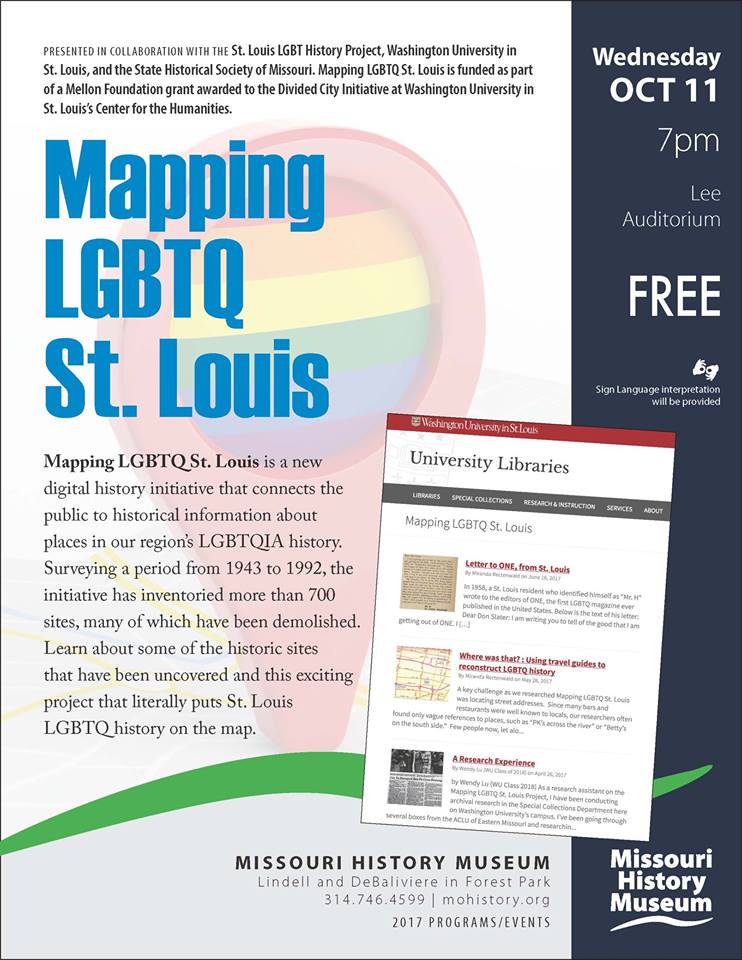Growing Up Next to Tommy and Jane
 By Sharon Cortelyou
By Sharon Cortelyou
January 5, 2018: "Tommy" started walking the neighborhood when I was about twelve. Dressed in a tan trench coat, slacks and sensible shoes, she walked with purpose and did not meet my gaze when we met on the sidewalk. I had heard she had a heart attack and guessed that the walking was a suggestion from the doctor. Tommy and Jane were my next door neighbors for 18 years. In researching their lives, I found that they had bought the house on Sunset Blvd. in Cape Girardeau during the 1930s. My parents bought the house next door in the late 1950s and I was born a few years later. We lived there until my senior year in high school.
I am now very involved in collecting the history of the LGBT community and even for those born in the 40s, 50s, or 60s, I hear a common theme. Many say that they were adults before they even realized there was such a thing as a same sex relationship. It was a virtual unknown. But for me, that was not the case. Despite the conservative, small town, life of my childhood, I always knew there was such a thing. For better or worse, I had the "queers next door" which is how my father described them. I will point out that the label was not said with malice. My father seemed to like them much more than our neighbors on the other side. That was just the language he knew.
I never had much interaction with Tommy. I theorized that as the butch in the relationship, she might have been especially nervous about interacting with a young girl. I wonder if things would have been different if I were a boy. Jane, on the other hand, was friendly and always bought a box or two of Girl Scout cookies when I knocked on their door each year. They were quiet neighbors and rarely ever spent any time outside. They hired me to clean their fence line each year which generally left me covered with poison oak. Jane was born in 1908 so when I was nine, they were probably moving into their 60th year. I don't know if Tommy was older or younger. One thing I remember noticing about them is that every Sunday when we left for church, their car didn't move.
I never consciously connected who I was to who they were until after I came out at age 19. By then, we had just moved to another part of Cape Girardeau. But one very vivid memory was around the time of my high school prom. I was going with a guy named Mark. My mom bought a dress for me and of course before we left, there were photos to take and we were outside in front of the house. You would think that I would be focused on the flowers, the dress, maybe even Mark. Instead, I was acutely aware of what the neighbors might be thinking and while on the surface I wanted them to see that I was not like them. Deep down, that was one of several moments that I realized that I was exactly like them and part of me wanted them to know. I was sorry that they were seeing me with this boy and would think something that wasn't true because deep down, I knew that we were more alike that I was ready to accept. That is one of my pivotal memories from high school.
Over the years, I often thought of dropping in on Jane as I had heard that Tommy passed away. But I never did and she passed in 1997. It was really about that time that I started becoming interested in LGBT history and I am still so sorry I missed the amazing opportunity of hearing their story. Jane Barnett was born in the Missouri Bootheel and she spent most of her adult years in my conservative small town of Cape Girardeau. Tommy seems to have been from Cape Girardeau originally. They were both great supporters of the arts and owned a downtown store called the Coop. There are amazing pictures in this link. As far as I can tell, they may have had a forty year relationship before Tommy passed away.
Link to State Historical Society of Missouri photos of Tommy and Jane
Image courtesy Sharon Cortelyou (around age five with Tommy and Jane's house in the background).
2017 St. Louis PrideFest Guide Feature: Mapping LGBTQ St. Louis

By Steven L. Brawley
Special to 2017 St. Louis PrideFest Guide
June 19, 2017: As we celebrate Pride 2017, the St. Louis LGBT History Project is excited to provide an update on a new historic initiative that will literally put St. Louis on the map.
Through an innovative partnership with Washington University in St. Louis, the Missouri History Museum, and the State Historical Society of Missouri (UMSL), the Project is assisting in the development of "Mapping LGBTQ St. Louis" digital history initiative.
Mapping LGBTQ St. Louis is set to launch October 2017 with an exciting interactive website. Surveying a period from 1943 to 1992, the initiative has inventoried more than 700 LGBTQ spaces. The new map is being funded as a part of a Mellon Foundation grant awarded to the Divided City initiative at Washington University's Center for Humanities.
Since spring 2016, students, researchers, faculty, archivists, librarians, and interested people have been gathering historical information about places connected to St. Louis's LGBTQIA community. The information is being organized using GIS tools to show sites on a digital map (think Google Maps – but with history).
Ian Darnell, Ph.D. candidate University of Illinois at Chicago and St. Louis LGBT History Project researcher, says the mapping project is uncovering many lost and unknown LGBTQ places.
"I was amazed to learn how many historical LGBTQ spaces were in structures that were demolished to make way for parking lots and garages," says Darnell.
According to Darnell, one of the best examples of this pattern is the Entre Nous, an infamous gay bar in downtown St. Louis that was raided by the police in the 1950s. The building were the Entre Nous was located was torn down and replaced with the Famous-Barr parking garage in the early 1960s.
Dr. Andrea Friedman, co-director of the Mapping LGBTQ St. Louis initiative and Professor of History and Women, Gender and Sexuality Studies at Washington University, says that finding these lost spaces has sometimes been a challenge.
"In the early years, many community organizations were identified only by a post office box or phone number, which meant we couldn't identify their locations for the map," says Dr. Friedman. "Because St. Louis is so marked by racial division, it has been harder to find the more informal or less visible social spaces that, if St. Louis is like other cities, may have been the center of African American LGBTQ life, such as residences, after-hours places, or places of worship."
Darnell says the research task was made much easier by posing questions to the members of the St. Louis LGBT History Project's Facebook group.
"Many of the older members of the group were firsthand witnesses to St. Louis's LGBT history," Darnell says. "In a number of cases, they were able draw on their memories to confirm, supplement, or even correct written records. I want to thank everyone who contributed to these discussions online. Their help was invaluable."
"The beauty of mapping is that it helps make clear the ways a community is made through (or divided by) space. Users of the new map will be able to see how the St. Louis region's LGBTQ community changed over time. It will showcase where the bars, the bathhouses, and the drag balls were, and track the emergence of other community spaces such as restaurants, shops, community centers, places of worship, dances, self-help groups, the sites of protest and policing, even the places where St. Louisans met for sex," says Dr. Friedman. "There will be links to photographs, news clippings, oral history transcripts, and other documents to tell the stories behind the dots on the map."
Darnell believes the map will inform the community about St. Louis' LGBTQ history, contributions, and influence.
"I think it will show that LGBTQ people have had an impact on nearly every part of the St. Louis region—truly, "we are everywhere." But it will be equally clear that LGBTQ social spaces and activism have tended to be concentrated in certain parts of the metropolitan region, and that shifts in the geography of St. Louis's LGBTQ spaces were related to the region's history of racial segregation, socioeconomic inequality, and urban decline and renewal. St. Louis's LGBTQ history isn't somehow apart from the city's wider history -- it's embedded in everything else."
Learn more about Mapping LGBTQ St. Louis.
Learn more about the St. Louis LGBT History Project.
The 2017 St. Louis PrideFest Guide is available in the Riverfront Times or at the June 23-25 St. Louis PrideFest.





